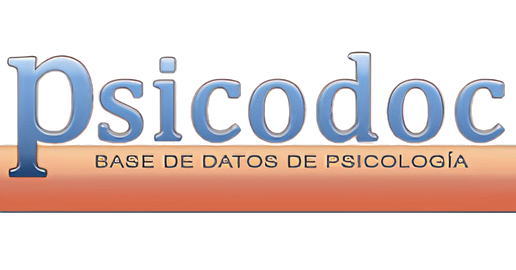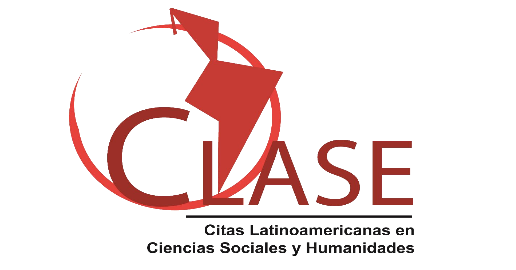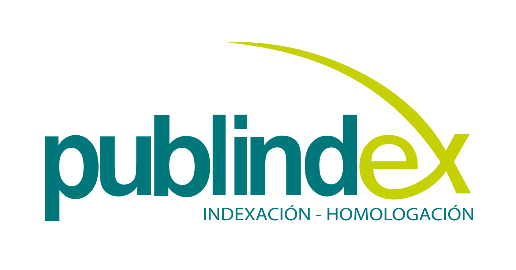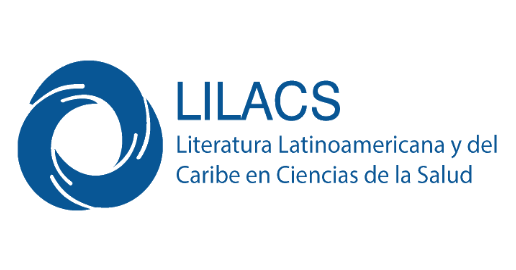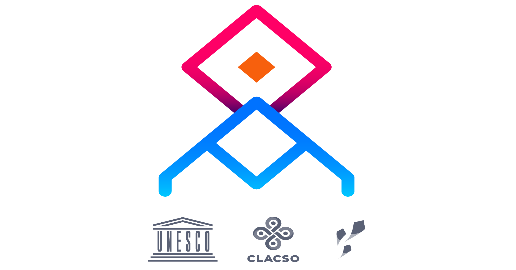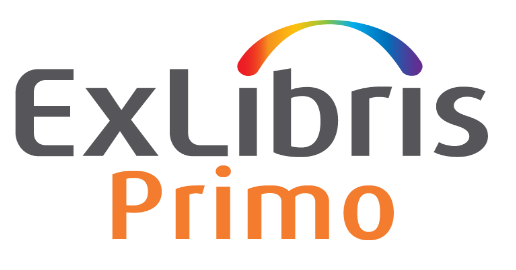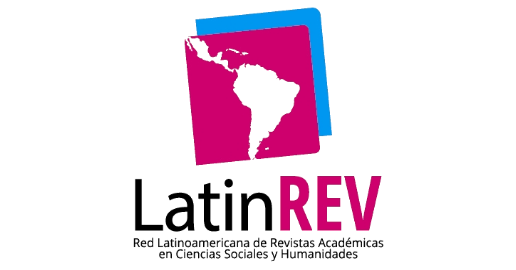
Esta obra está bajo una licencia internacional Creative Commons Atribución-NoComercial-CompartirIgual 4.0.
Los autores que publiquen en esta Revista aceptan las siguientes condiciones:
Acta Colombiana de Psicología se guía por las normas internacionales sobre propiedad intelectual y derechos de autor, y de manera particular el artículo 58 de la Constitución Política de Colombia, la Ley 23 de 1982 y el Acuerdo 172 del 30 de Septiembre de 2010 (Reglamento de propiedad intelectual de la Universidad Católica de Colombia)
Los autores conservan los derechos de autor y ceden a la Revista el derecho de la primera publicación, con el trabajo registrado con la Este obra está bajo una licencia de Creative Commons Reconocimiento-NoComercial-CompartirIgual 4.0 Internacional, que permite a terceros utilizar lo publicado siempre que mencionen la autoría del trabajo y a la primera publicación en esta Revista.
Resumen
Los campus universitarios han sido utilizados como laboratorios sociales por la importancia de sus procesos formativos y la concentración de individuos que los circulan. Aunque se han realizado estudios en estos escenarios para promover comportamientos proambientales y prosociales, no se ha realizado una exploración sobre las investigaciones que usan los campus para la formación en comportamientos urbanos responsables (CUR). Este estudio tuvo como propósito explorar el estado actual de estas investigaciones mediante un análisis bibliométrico, utilizando las herramientas de analítica VOSviewer y el paquete bibliométrico de R Studio. Para el análisis de contenido se utilizó Atlas.ti. La búsqueda se realizó en Scopus y Web of Science, y se revisó un total de 164 artículos sobre intervenciones en campus universitarios. El análisis de coocurrencia destaca las asociaciones entre los términos “sostenibilidad”, “conservación de energía”, “normas sociales” y “retroalimentación”. Además, los resultados indican un aumento significativo en los artículos relacionados con la promoción de CUR en los campus universitarios, sobre todo enfocados en el uso responsable de energía y agua, consumo de alcohol, manejo de residuos, sostenibilidad, seguridad, convivencia y agresión sexual. Estas intervenciones se implementaron a través de mensajes verbales e indicaciones basadas en normas sociales descriptivas, normas prescriptivas, acicates y recompensas. No obstante, si bien los resultados son prometedores, su generalización es limitada. Como conclusión, las intervenciones exitosas en campus universitarios pueden servir como modelos para otras instituciones, sobre todo por promover la sostenibilidad y el cambio cultural a nivel global, teniendo en cuenta que es esencial integrar estrategias proambientales y prosociales para crear comunidades universitarias justas y sostenibles.

Citas
Abolarin, S. M., Gbadegesin, A. O., Shitta, M. B., Yussuff, A., Eguma, C. A., Ehwerhemuepha, L., & Adegbenro, O. (2013). A collective approach to reducing carbon dioxide emission: A case study of four University of Lagos Halls of residence. Energy and Buildings, 61, 318-322. https://doi.org/10.1016/j.enbuild.2013.02.041
Abubakar, I. R., Maniruzzaman, K. M., Dano, U. L., AlShihri, F. S., AlShammari, M. S., Ahmed, S. M. S., Al-Gehlani, W. A. G., & Alrawaf, T. I. (2022). Environmental Sustainability Impacts of Solid Waste Management Practices in the Global South. International Journal of Environmental Research and Public Health, 19(19), 12717.
https://doi.org/10.3390/ijerph191912717
Aria, M., & Cuccurullo, C. (2017). bibliometrix: An R-tool for comprehensive science mapping analysis. Journal of Informetrics, 11(4), 959-975. https://doi.org/10.1016/j.joi.2017.08.007
Austin, J., Hackett, S., Gravina, N., & Lebbon, A. (2006). The effects of prompting and feedback on drivers’ stopping at stop signs. Journal of Applied Behavior Analysis, 39(1), 117-121. https://doi.org/10.1901/jaba.2006.49-04
Austin, J., Hatfield, D. B., Grindle, A. C., & Bailey, J. S. (1993). Increasing recycling in office environments: the effects of specific, informative cues. Journal of Applied Behavior Analysis, 26(2), 247-253. https://doi.org/10.1901/jaba.1993.26-247
Baba-Nalikant, M., Syed-Mohamad, S. M., Husin, M. H., Abdullah, N. A., Mohamad Saleh, M. S., & Abdul Rahim, A. (2023). A Zero-Waste Campus Framework: Perceptions and Practices of University Campus Community in Malaysia. Recycling, 8(1), 21. https://doi.org/10.3390/recycling8010021
Bandura, A. (2004). Health Promotion by Social Cognitive Means. Health Education & Behavior, 31(2), 143-164. https://doi.org/10.1177/1090198104263660
Bateson, M., Callow, L., Holmes, J. R., Redmond Roche, M. L., & Nettle, D. (2013). Do images of “watching eyes” induce behaviour that is more pro-social or more normative? A field experiment on littering. PLoS ONE, 8(12), e82055. https://doi.org/10.1371/journal.pone.0082055
Baytar, F., & Ashdown, S. P. (2014). Using video as a storytelling medium to influence textile and clothing students environmental knowledge and attitudes. International Journal of Fashion Design, Technology and Education, 7(1), 31-41. https://doi.org/10.1080/17543266.2013.864339
Becker, N., & Carmi, N. (2019). Changing trip behavior in a higher education institution: The role of parking fees. International Journal of Sustainable Transportation, 13(4), 268-277. https://doi.org/10.1080/15568318.2018.1463418
Berger, V., & Koch, D. (2024). The climate wins! – How a gamification approach can foster sustainable consumption on university campuses and beyond. International Journal of Sustainability in Higher Education, 25(8), 1646-1661. https://doi.org/10.1108/IJSHE-08-2022-0269
Berry, T. D., Geller, E. S., Calef, R. S., & Calef, R. A. (1992). Moderating Effects of Social Assistance on Verbal Interventions to Promote Safety Belt Use: An Analysis of Weak Plys. Environment and Behavior, 24(5), 653-669. https://doi.org/10.1177/0013916592245005
Blanton, H., & Christie, C. (2003). Deviance Regulation: A Theory of Action and Identity. Review of General Psychology,
(2), 115-149. https://doi.org/10.1037/1089-2680.7.2.115
Bonar, E. E., DeGue, S., Abbey, A., Coker, A. L., Lindquist, C. H., McCauley, H. L., Miller, E., Senn, C. Y., Thompson, M. P., Ngo, Q. M., Cunningham, R. M., & Walton, M. A. (2022). Prevention of sexual violence among college students: Current challenges and future directions. Journal of American College Health, 70(2), 575-588.
https://doi.org/10.1080/07448481.2020.1757681
Boyce, T. E., & Geller, E. S. (2000). A community-wide intervention to improve pedestrian safety: Guidelines for institutionalizing large-scale behavior change. Environment and Behavior, 32(4), 502-520. https://doi.org/10.1177/00139160021972630
Boyce, T. E., & Geller, E. S. (2001). Encouraging college students to support pro-environment behavior. Effects of direct versus indirect rewards. Environment and Behavior, 33(1), 107-125. https://doi.org/10.1177/00139160121972891
Cao, G., Cao, R., & Liu, P. (2023). How does abstract and concrete garbage classification signage influence waste sorting behavior? PeerJ, 11, e16597. https://doi.org/10.7717/peerj.16597
Carrizo, D., & Moller, C. (2018). Estructuras metodológicas de revisiones sistemáticas de literatura en Ingeniería de Software: un estudio de mapeo sistemático. Ingeniare. Revista chilena de ingeniería, 26(supl. 1), 45-54. http://dx.doi.org/10.4067/S0718-33052018000500045
Choi, B., Lee, K., Moon, K., & Oah, S. (2018). A comparison of prompts and feedback for promoting handwashing in university restrooms. Journal of Applied Behavior Analysis, 51(3), 667-674. https://doi.org/10.1002/jaba.467
Chongwilaikasaem, S., & Ayaragarnchanakul, E. (2023). Electricity saving behavior in student dorms: What message framing works? Journal of Behavioral and Experimental Economics, 107, 102088. https://doi.org/10.1016/j.socec.2023.102088
Clack, Z. A., Pitts, S. R., & Kellermann, A. L. (2000). Do reminder signs promote use of safety belts? Annals of Emergency Medicine, 36(6), 597-601. https://doi.org/10.1067/mem.2000.111059
Clayton, M. C., & Blaskewicz, J. (2012). The Use of Visual Prompts to Increase the Cleanliness of Restrooms on a College Campus. Journal of Organizational Behavior Management, 32(4), 329-337. https://doi.org/10.1080/01608061.2012.729393
Clayton, M. C., & Helms, B. P. (2009). Increasing seatbelt use o na college campus: An evaluation of two prompting procedures. Journal of Applied Behavior Analysis, 42(1), 161-164. https://doi.org/10.1901/jaba.2009.42-161
Clayton, M., Helms, B., & Simpson, C. (2006). Active prompting to decrease cell phone use and increase seat belt use while driving. Journal of Applied Behavior Analysis, 39(3), 341-349. https://doi.org/10.1901/jaba.2006.153-04
Clayton, M., & Myers, E. (2008). Increasing turn signal use by drivers exiting a university parking garage: A comparison of passive and mediated prompting. Journal of Organizational Behavior Management, 27(4), 53-61. https://doi.org/10.1300/J075v27n04_03
Clayton, M., & Nesnidol, S. (2017). Reducing Electricity Use on Campus: The Use of Prompts, Feedback, and Goal Setting to Decrease Excessive Classroom Lighting. Journal of Organizational Behavior Management, 37(2), 196-206. https://doi.org/10.1080/01608061.2017.1325823
Clot, S., Della Giusta, M., & Jewell, S. (2022). Once Good, Always Good? Testing Nudge’s Spillovers on Pro Environmental Behavior. Environment and Behavior, 54(3), 655-669. https://doi.org/10.1177/00139165211060524
Corney, T., & du Plessis, K. (2022). Australian first-year university college residents’ alcohol consumption and alcohol-related harms. NAD Nordic Studies on Alcohol and Drugs, 39(4), 406-417. https://doi.org/10.1177/14550725221090037
Cox, M. G., & Geller, E. S. (2010). Prompting safety belt use: Comparative impact on the target behavior and relevant body language. Journal of Applied Behavior Analysis, 43(2), 321-325. https://doi.org/10.1901/jaba.2010.43-321
Cuy, D., Kenehan, S., & Murray, L. (2024). Sustainable Eating Practices on a University Campus: A Behavioral and Environmental Intervention. Journal of Hunger & Environmental Nutrition, 19(2), 277-290. https://doi.org/10.1080/19320248.2022.2097036
Dixon, R. S., Knott, T., Rowsell, H., Sheldon, L., & Moore, D. W. (1992). Prompts and Posted Feedback: In Search of an Effective Method of Litter Control. Behaviour Change, 9(1), 2-7. https://doi.org/10.1017/S0813483900006495
Du, J., & Pan, W. (2021). Evaluating energy saving behavioral interventions through the lens of social practice theory: A case study in Hong Kong. Energy and Buildings, 251, 111353. https://doi.org/10.1016/j.enbuild.2021.111353
Duong, M., & Pensini, P. (2023). The role of connectedness in sustainable behaviour: A parallel mediation model examining the prosocial foundations of pro-environmental behaviour. Personality and Individual Differences, 209, 112216. https://doi.org/10.1016/j.paid.2023.112216
Durdan, C. A., Reeder, G. D., & Hecht, P. R. (1985). Litter in a university cafeteria: Demographic Data and the Use of Prompts as an Intervention Strategy. Environment and Behavior, 17(3), 387-404. https://doi.org/10.1177/0013916585173007
Dvorak, R. D., Pearson, M. R., Neighbors, C., & Martens, M. P. (2015). Fitting in and standing out: Increasing the use of alcohol protective behavioral strategies with a deviance regulation intervention. Journal of Consulting and Clinical Psychology, 83(3), 482-493. https://doi.org/10.1037/a0038902
Dzivon, J. J. E., & Quao, R. N. A. (2023). Modelling the influence of socio-demographic attributes on students’ trip generation at Kwame Nkrumah University of Science and Technology (KNUST) campus. Urban, Planning and Transport Research, 11(1), 2276407. https://doi.org/10.1080/21650020.2023.2276407
Francey, D., & Bergmüller, R. (2012). Images of eyes enhance investments in a real-life public good. PLoS ONE, 7(5), e37397. https://doi.org/10.1371/journal.pone.0037397
Geller, E. S., Bruff, C. D., & Nimmer, J. G. (1985). “Flash for life”: community‐based prompting for safety belt promotion. Journal of Applied Behavior Analysis, 18(4), 309-314. https://doi.org/10.1901/jaba.1985.18-309
Geller, E. S., Kalsher, M. J., Rudd, J. R., & Lehman, G. R. (1989). Promoting Safety Belt Use on a University Campus: An Integration of Commitment and Incentive Strategies. Journal of Applied Social Psychology, 19(1), 3-19. https://doi.org/10.1111/j.1559-1816.1989.tb01217.x
Giubergia, D., Piras, F., Tuveri, G., Sottile, E., & Meloni, I. (2023). Assessing the impact of normative messages in encouraging the use of sustainable mobility. An experimental study. Sustainable Cities and Society, 99, 104868. https://doi.org/10.1016/j.scs.2023.104868
He, S., Luo, Y., Qu, Y., & Hu, X. (2024). Does it work? Exploring the influence mechanism of financial incentives in cultivating pro-environmental behavior among college students. Journal of Cleaner Production, 436, 140695. https://doi.org/10.1016/j.jclepro.2024.140695
Heib, S., Hildebrand, J., & Kortsch, T. (2023). Energy saving behavior in university organizations: The value of norm constructions in a “rational choice” action model. Frontiers in Psychology, 14, 1082061. https://doi.org/10.3389/fpsyg.2023.1082061
Hu, H., Fang, W., & Yu, X. (2020). Enhancing individual commitment to energy conservation in organizational settings: Identity manipulation for behavioral changes. Resources, Conservation and Recycling, 156, 104720. https://doi.org/10.1016/j.resconrec.2020.104720
Iwasaki, S., Franssens, S., Dewitte, S., & Lange, F. (2021). Evaluating the effect of framing energy consumption in terms of losses versus gains on air-conditioner use: A field experiment in a student dormitory in Japan. Sustainability (Switzerland), 13(8), 4380. https://doi.org/10.3390/su13084380
Jakimiuk, A., Matsui, Y., Podlasek, A., Koda, E., Goli, V. S., Voběrková, S., Singh, D. N., & Vaverková, M. D. (2023). Closing the loop: A case study on pathways for promoting sustainable waste management on university campuses. Science of The Total Environment, 892, 164349. https://doi.org/10.1016/j.scitotenv.2023.164349
Karp, A., McCauley, M., & Byrne, J. (2016). The value of adding ambient energy feedback to conservation tips and goal-setting in a dormitory. International Journal of Sustainability in Higher Education, 17(4), 471-488. https://doi.org/10.1108/IJSHE-02-2015-0028
Katar, I. (2022). Promoting pedestrian ecomobility in Riyadh City for sustainable urban development. Scientific Reports, 12(1), 14808. https://doi.org/10.1038/s41598-022-18183-y
Kelly, T. C., Mason, I. G., Leiss, M. W., & Ganesh, S. (2006). University community responses to on-campus resource recycling. Resources, Conservation and Recycling, 47(1), 42-55. https://doi.org/10.1016/j.resconrec.2005.10.002
Kenney, S. R., Napper, L. E., Johnson, N. L., Wolter, L. C., & Orchowski, L. M. (2024). Looking out for You and Me: College students’ Strategies for Preventing Sexual Assault in Drinking Contexts. Substance Use & Misuse, 59(6), 928-936. https://doi.org/10.1080/10826084.2024.2310492
Khan, A., Goodell, J. W., Hassan, M. K., & Paltrinieri, A. (2022). A bibliometric review of finance bibliometric papers. Finance Research Letters, 47, 102520. https://doi.org/10.1016/j.frl.2021.102520
Kronrod, A., Tchetchik, A., Grinstein, A., Turgeman, L., & Blass, V. (2023). Promoting new pro-environmental behaviors: The effect of combining encouraging and discouraging messages. Journal of Environmental Psychology, 86, 101945. https://doi.org/10.1016/j.jenvp.2022.101945
Kurokawa, H., Igei, K., Kitsuki, A., Kurita, K., Managi, S., Nakamuro, M., & Sakano, A. (2023). Improvement impact of nudges incorporated in environmental education on students’ environmental knowledge, attitudes, and behaviors. Journal of Environmental Management, 325, 116612. https://doi.org/10.1016/j.jenvman.2022.116612
Kwakwa, P. A., Alhassan, H., Aboagye, S., & Asale, M. A. (2024). Electricity conservation intention among university students in northern Ghana: An assessment of the drivers for some electrical appliances. Cleaner and Responsible Consumption, 12, 100171. https://doi.org/10.1016/j.clrc.2024.100171
Leary, A. V., Dvorak, R. D., Troop-Gordon, W., Blanton, H., Peterson, R., Kramer, M. P., De Leon, A. N., & Magri, T. (2022). Test of a deviance regulation theory intervention among first-year college student drinkers: Differential effects via frequency and quantity norms. Psychology of Addictive Behaviors, 36(6), 619-634. https://doi.org/10.1037/adb0000777
Leoniak, K. J., & Cwalina, W. (2019). The role of normative prompts and norm support cues in promoting light-switching behavior: A field study. Journal of Environmental Psychology, 64, 1-11. https://doi.org/10.1016/j.jenvp.2019.04.014
Liu, N., Luo, X., Liu, X., & Xing, M. (2024). Impacts of normative information on college students’ energy-saving intentions and behaviors in the dormitory. Energy and Built Environment, 6(2), 347-361. https://doi.org/10.1016/j.enbenv.2023.12.001
Liu, X., Chen, S., Guo, X., & Fu, H. (2022). Can Social Norms Promote Recycled Water Use on Campus? The Evidence From Event-Related Potentials. Frontiers in Psychology, 13, 818292. https://doi.org/10.3389/fpsyg.2022.818292
Liu, Y., Cleary, A., Fielding, K. S., Murray, Z., & Roiko, A. (2022). Nature connection, pro-environmental behaviours and wellbeing: Understanding the mediating role of nature contact. Landscape and Urban Planning, 228, 104550. https://doi.org/10.1016/j.landurbplan.2022.104550
Lotti, L., Barile, L., & Manfredi, G. (2023). Improving recycling sorting behaviour with human eye nudges. Scientific Reports, 13(1), 10127. https://doi.org/10.1038/s41598-023-37019-x
Luengo, B. P., Eisenberg, N., Tramontano, C., Zuffiano, A., Caprara, M. G., Regner, E., Zhu, L., Pastorelli, C., & Caprara, G. V. (2021). Measuring Prosocial Behaviors: Psychometric Properties and Cross-National Validation of the Prosociality Scale in Five Countries. Frontiers in Psychology, 12, 693174. https://doi.org/10.3389/ fpsyg.2021.693174
Mahlangu, P., Machisa, M., Sikweyiya, Y., Nunze, N., Dartnall, E., Pillay, M., & Jewkes, R. (2022). Preliminary evidence of promise of a sexual violence risk reduction intervention for female students in South African tertiary education institutions. Global Public Health, 17(11), 2720-2736. https://doi.org/10.1080/17441692.2021.1998574
Mason, I. G., Oberender, A., & Brooking, A. K. (2004). Source separation and potential re-use of resource residuals at a university campus. Resources, Conservation and Recycling, 40(2), 155-172. https://doi.org/10.1016/S0921-3449(03)00068-5
Mekonen, T., Fekadu, W., Chane, T., & Bitew, S. (2017). Problematic alcohol use among university students. Frontiers in Psychiatry, 8, 86. https://doi.org/10.3389/fpsyt.2017.00086
Melville-Rea, K., & Arndt, S. K. (2024). Net-Zero Heroes? Climate Change Mitigation Efforts and Strategies across Australian Group-of-Eight Universities. Sustainability, 16(7), 2937. https://doi.org/10.3390/su16072937
Merlin, L. A., Freeman, K., Renne, J., & Hoermann, S. (2022). Clustered randomized controlled trial protocol of a Mobility-as-a-Service app for College campuses. Transportation Research Interdisciplinary Perspectives, 14, 100572. https://doi.org/10.1016/j.trip.2022.100572
Miller, D. T., & Prentice, D. A. (2016). Changing norms to change behavior. Annual Review of Psychology, 67, 339-361. https://doi.org/10.1146/annurev-psych-010814-015013
Mohammed, A. M. S., Ukai, T., & Hall, M. (2022). Towards a sustainable campus-city relationship: A systematic review of the literature. Regional Sustainability, 3(1), 53-67. https://doi.org/10.1016/J.REGSUS.2022.03.004
Monroe, J. T., Lofgren, I. E., Sartini, B. L., & Greene, G. W. (2015). The Green Eating Project: Web-based intervention to promote environmentally conscious eating behaviours in US university students. Public Health Nutrition, 18(13), 2368-2378. https://doi.org/10.1017/S1368980015002396
Morren, M., & Grinstein, A. (2021). The cross-cultural challenges of integrating personal norms into the Theory of Planned Behavior: A meta-analytic structural equation modeling (MASEM) approach. Journal of Environmental Psychology, 75, 101593. https://doi.org/10.1016/j.jenvp.2021.101593
Myers, E., & Souza, M. (2020). Social comparison nudges without monetary incentives: Evidence from home energy reports. Journal of Environmental Economics and Management, 101, 102315. https://doi.org/10.1016/j.jeem.2020.102315
Naciones Unidas. (2018). La Agenda 2030 y los Objetivos de Desarrollo Sostenible: una oportunidad para América Latina y el Caribe. CEPAL. https://repositorio.cepal.org/server/api/core/bitstreams/cb30a4de-7d87-4e79-8e7aad5279038718/content
Naciones Unidas. (2023, mayo 5). Garantizar un futuro sostenible. https://www.un.org/sustainabledevelopment/es/2023/05/un-2023-sdg-summit/
Nasar, J. L. (2003). Prompting drivers to stop for crossing pedestrians. Transportation Research Part F: Traffic Psychology and Behaviour, 6(3), 175-182. https://doi.org/10.1016/S1369-8478(03)00024-X
Neaman, A., Pensini, P., Zabel, S., Otto, S., Ermakov, D. S., Dovletyarova, E. A., Burnham, E., Castro, M., & Navarro-Villarroel, C. (2022). The Prosocial Driver of Ecological Behavior: The Need for an Integrated Approach to Prosocial and Environmental Education. Sustainability, 14(7), 4202. https://doi.org/10.3390/su14074202
Nettle, D., Nott, K., & Bateson, M. (2012). “Cycle Thieves, We Are Watching You”: Impact of a Simple Signage Intervention against Bicycle Theft. PLoS ONE, 7(12), e51738. https://doi.org/10.1371/journal.pone.0051738
Null, D. C., Hurst, K. F., & Duram, L. A. (2024). Beyond the classroom: Influence of a sustainability intervention on university students’ environmental knowledge and behaviors. Journal of Environmental Studies and Sciences, 14(2), 224-235. https://doi.org/10.1007/s13412-023-00882-1
Okinaka, T., & Shimazaki, T. (2011). The effects of prompting and reinforcement on safe behavior of bicycle and
motorcycle riders. Journal of Applied Behavior Analysis, 44(3), 671-674. https://doi.org/10.1901/jaba.2011.44-671
Organización de las Naciones Unidas para la Alimentación y la Agricultura. (2019). El estado mundial de la agricultura y la alimentación. https://openknowledge.fao.org/server/api/core/bitstreams/2120f787-5a49-41f5-a9fbf4ceaac98b2c/content
Otto, S., Pensini, P., Zabel, S., Diaz-Siefer, P., Burnham, E., Navarro-Villarroel, C., & Neaman, A. (2021). The prosocial origin of sustainable behavior: A case study in the ecological domain. Global Environmental Change, 69, 102312. https://doi.org/10.1016/j.gloenvcha.2021.102312
Pandey, N., Diller, J. W., & Miller, L. S. (2016). E-mailed prompts and feedback messages to reduce energy consumption: Testing mechanisms for behavior change by employees at a green university. Journal of Organizational Behavior Management, 36(4), 332-345. https://doi.org/10.1080/01608061.2016.1201034
Páramo, P. (2007). La ciudad: una trama de lugares. Psicologia Para América Latina, 10. http://pepsic.bvsalud.org/scielo.php?script=sci_arttext&pid=S1870-350X2007000200003&lng=pt&nrm=iso&tlng=es
Páramo, P. (2013). Comportamiento urbano responsable: las reglas de convivencia en el espacio público. Revista Latinoamericana de Psicología, 45(3), 475-487. https://doi.org/10.14349/rlp.v45i3.1488
Páramo, P. (2017). Reglas proambientales: una alternativa para disminuir la brecha entre el decir-hacer en la educación ambiental. Suma Psicológica, 24(1), 42-58. https://doi.org/10.1016/j.sumpsi.2016.11.001
Páramo, P., Burbano, A., Ojeda, G., & Angulo, É. (2025). La señalización urbana orientada a la convivencia. Revista de Arquitectura (Bogotá), 27(1), 143-161. https://doi.org/10.14718/RevArq.2025.27.5402
Páramo, P., Caycedo, C., Angel, C. M., & Omaña, P. (1990). Diseño ambiental para la modificación de conductas proambientales en una institución universitaria. Colombia. Revista de Análisis y Terapia del Comportamiento, 1(1), 35-44.
Parece, T. E., Grossman, L., & Geller, E. S. (2013). Reducing Carbon Footprint of Water Consumption: A Case Study of Water Conservation at a University Campus. En T. Younos, & C. Grady (Eds.), Climate Change and Water Resources. The Handbook of Environmental Chemistry (Vol. 25, pp. 199-218). Springer.
https://doi.org/10.1007/698_2013_227
Parece, T. E., Younos, T., Grossman, L. S., & Geller, E. S. (2013). A study of environmentally relevant behavior in university residence halls. International Journal of Sustainability in Higher Education, 14(4), 466-481.
https://doi.org/10.1108/IJSHE-01-2012-0008
Park, S. Y., Son, H., Lee, J., & Go, E. (2020). Moderating Effects of Social Norms and Alcohol Consumption on Message Framing in Responsible Drinking Campaigns: Value from Deviance Regulation Theory. Health Communication, 35(7), 793-803. https://doi.org/10.1080/10410236.2019.1593077
Peters, A., Hanss, D., & Sartorius, C. (2016). Determinants of adopting technological feedback devices and wáter conservation behaviors. En P. M. Mayr H. C. (Ed.), Lecture Notes in Informatics (LNI), Proceedings - Series of the Gesellschaft fur Informatik (GI) (Vol. P-259, pp. 1407-1409). Gesellschaft fur Informatik. https://dl.gi.de/server/api/core/bitstreams/09a042b7-d60a-4d46-b351-f75effb5d5d5/content
Petersen, J. E., Shunturov, V., Janda, K., Platt, G., & Weinberger, K. (2007). Dormitory residents reduce electricity consumption when exposed to real-time visual feedback and incentives. International Journal of Sustainability in Higher Education, 8(1), 16-33. https://doi.org/10.1108/14676370710717562
Petersen, K., Feldt, R., Mujtaba, S., & Mattsson, M. (2008). Systematic mapping studies in software engineering. En 12th international conference on evaluation and assessment in software engineering (EASE) (pp. 68-77). BCS Learning & Development. https://dl.acm.org/doi/10.5555/2227115.2227123
Piché, P., Belghache, E., Verstaevel, N., & Lartigue, B. (2017). Impact of eco-feedback on the behavior of campus users. 2017 IEEE SmartWorld, Ubiquitous Intelligence & Computing, Advanced & Trusted Computed, Scalable Computing & Communications, Cloud & Big Data Computing, Internet of People and Smart City Innovation (SmartWorld/SCALCOM/
UIC/ATC/CBDCom/IOP/SCI), San Francisco, California, EE. UU. https://doi.org/10.1109/UIC-ATC.2017.8397401
Pinho, M., & Gomes, S. (2023). What Role Does Sustainable Behavior and Environmental Awareness from Civil Society Play in the Planet’s Sustainable Transition. Resources, 12(3), 42. https://doi.org/10.3390/resources12030042
Pinilla, R. F., & Páramo, P. (2021). Elección de un comportamiento urbano responsable a partir del beneficio, la saliencia del anuncio y la probabilidad de recibir aprobación y reproche. Diversitas, 17(2). https://doi.org/10.15332/22563067.7248
Pinto, R. S., Pinto, R. M. D. S., Melo, F. F. S., Campos, S. S., & Cordovil, C. M.-D.-S. (2018). A simple awareness campaign to promote food waste reduction in a University canteen. Waste Management, 76, 28-38. https://doi.org/10.1016/j.wasman.2018.02.044
Platis, M. I., & Romanowicz, J. (2020). Integrating energy saving awareness into student engagement‐based teaching and learning process. Sustainability, 12(22), 1-18. https://doi.org/10.3390/su12229626
Pujani, V., Akbar, F., & Nazir, R. (2023). Managing Electricity Consumption on Campus: The Effect of Online Learning from Home. International Journal of Energy Economics and Policy, 13(3), 384-395. https://doi.org/10.32479/ijeep.14147
Qin, B., & Chen, H. (2022). Does the nudge effect persist? Evidence from a field experiment using social comparison message in China. Bulletin of Economic Research, 74(3), 689-703. https://doi.org/10.1111/BOER.12313
Robinson, T. (2023). The effects of bin location and abundance on disposal behavior at beaches. Marine Pollution Bulletin, 197. https://doi.org/10.1016/j.marpolbul.2023.115697
Rosenberg, R. E., Gerdes, M. E., Fix, S., Vivino, A., Rainey, K., & Bernat, E. (2024). Evaluating the impact of water reuse educational videos on water reuse perceptions using EEG/event related potential. Journal of Environmental Management, 349, 119560. https://doi.org/10.1016/J.JENVMAN.2023.119560
Salazar, L., Vivolo-Kantor, A., & Schipani-McLaughlin, A. M. (2018). Theoretical Mediators of RealConsent : A Web-Based Sexual Violence Prevention and Bystander Education Program. Health Education & Behavior, 46(1), 79-88. https://doi.org/10.1177/1090198118779126
Sandoval-Escobar, M. C., & Páramo-Bernal, P. (2020). Análisis del discurso ambiental intersectorial en la educación superior en Colombia. En I. F. Medina-Arboleda, I. Barreto, D. R. Aguilar & M. C. Sandoval (Eds.), Perspectivas y contextos de la prosocialidad y la convivencia (pp. 285-310). Editorial Universidad Católica de Colombia.
https://doi.org/10.14718/9789585133471.2020
Sas, M., Ponnet, K., Reniers, G., & Hardyns, W. (2022). Nudging as a crime prevention strategy: the use of nudges to improve cyclists’ locking behavior and reduce the opportunities for bicycle theft. Security Journal, 35(2), 463-485. https://doi.org/10.1057/s41284-021-00285-3
Saza-Quintero, A. F., Sierra-Barón, W., & Gómez-Acosta, A. (2021). Comportamiento proambiental y conocimiento ambiental en universitarios: ¿ el área de conocimiento hace la diferencia?. CES Psicología, 14(1), 64-84. https://doi.org/10.21615/cesp.14.1.6
Sierra-Barón, W., & Páramo, P. (2024). Estrategias para Promover Comportamientos Urbanos Responsables en los Campus Universitarios: Un Análisis Cualitativo del Alcance. The Qualitative Report, 29(10), 2615-2657. https://doi.org/10.46743/2160-3715/2024.7078
Sierra-Barón, W., Quiñonez, E. M., Villalba, N. V., Suarez, P. A. Chilito, M. A., & Medina, S. A. (2024). Bienestar psicológico y comportamiento proambiental en un grupo de universitarios de nuevo ingreso. Informes Psicológicos, 24(1), 136-154. https://doi.org/10.18566/infpsic.v24n1a09
Sierra-Barón, W., & Zasa-Quintero, A.F. (2023). Propiedades psicométricas preliminares del Índice de Comportamiento Proambiental (ICP) en una muestra colombiana. Informes Psicológicos, 23(1), 125-141.
https://doi.org/10.18566/infpsic.v23n1a08
Smyth, D. P., Fredeen, A. L., & Booth, A. L. (2010). Reducing solid waste in higher education: The first step towards “greening” a university campus. Resources, Conservation and Recycling, 54(11), 1007-1016. https://doi.org/10.1016/j.resconrec.2010.02.008
Thaler, R. H. (2018). Nudge, not sludge. Science, 361(6401), 431. https://doi.org/10.1126/science.aau9241
Thondhlana, G., & Hlatshwayo, T. N. (2018). Pro-environmental behaviour in student residences at Rhodes University, South Africa. Sustainability, 10(8), 2746. https://doi.org/10.3390/su10082746
Thyer, B. A., & Geller, E. S. (1987). The “buckle-up” dashboard sticker:An Effective Environmental Intervention for Safety Belt Promotion. Environment and Behavior, 19(4), 484-494. https://doi.org/10.1177/0013916587194005
Tian, L., Xiong, L., Liu, H., Mao, P., Li, H., & Dai, Z. (2022). An empirical study of students’ air conditioning energyuse behavior in university dormitories—a case of nanjing, china. Journal of Green Building, 17(1), 169-198.
https://doi.org/10.3992/jgb.17.1.169
Tifferet, S., Rosenblit, N., & Shalev, M. (2017). Promoting sustainability in a college café by opposite-sex cashiers. International Journal of Sustainability in Higher Education, 18(7), 1279-1290. https://doi.org/10.1108/IJSHE-01-2016-0013
Tinto, J. A. (2013). El análisis de contenido como herramienta de utilidad para la realización de una investigación descriptiva. Provincia, 1(29), 135-173. https://www.redalyc.org/pdf/555/55530465007.pdf
United States Environmental Protection Agency. (2023). Zero Waste Case Study: San Francisco. https://www.epa.gov/ transforming-waste-tool/zero-waste-case-study-san-francisco
Vermeir, I., & Verbeke, W. (2008). Sustainable food consumption among young adults in Belgium: Theory of planned behaviour and the role of confidence and values. Ecological Economics, 64(3), 542-553. https://doi.org/10.1016/j.ecolecon.2007.03.007
Visschers, V. H. M., Gundlach, D., & Beretta, C. (2020). Smaller servings vs. information provision: Results of two interventions to reduce plate waste in two university canteens. Waste Management, 103, 323-333. https://doi.org/10.1016/j.wasman.2019.12.046
Wang, J., Gu, Y., Xin, H., & Wang, X. (2022a). Influence of Appeal Type and Message Framing on Residents’ Intent to Engage in Pro-Environmental Behavior. International Journal of Environmental Research and Public Health, 19(23), 15431. https://doi.org/10.3390/ijerph192315431
Wang, X., Waris, I., Bhutto, M. Y., Sun, H., & Hameed, I. (2022b). Green Initiatives and Environmental Concern Foster Environmental Sustainability: A Study Based on the Use of Reusable Drink Cups. International Journal of Environmental Research and Public Health, 19(15), 9259. https://doi.org/10.3390/ijerph19159259
Watson, T. S. (1996). A prompt plus delayed contingency procedure for reducing bathroom graffiti. Journal of Applied Behavior Analysis, 29(1), 121-124. https://doi.org/10.1901/jaba.1996.29-121
Whitehair, K. J., Shanklin, C. W., & Brannon, L. A. (2013). Written Messages Improve Edible Food Waste Behaviors in a University Dining Facility. Journal of the Academy of Nutrition and Dietetics, 113(1), 63-69. https://doi.org/10.1016/j.jand.2012.09.015
Witmer, J. F., & Geller, E. S. (1976). Facilitating paper recycling: Effects of prompts, raffles, and contests. Journal of Applied Behavior Analysis, 9(3), 315-322. https://doi.org/10.1901/jaba.1976.9-315
Yan, Z., & Cortese, J. (2023). I Can Feel Your Pain: Investigating the Role of Empathy and Guilt on Sustainable Behavioral Intentions to Reduce, Reuse, and Recycle Plastic Bags among College Students. Sustainability, 15(8), 6572. https://doi.org/10.3390/su15086572
Zhang, D., Huang, G., Yin, X., & Gong, Q. (2015). Residents’ Waste Separation Behaviors at the Source: Using SEM with the Theory of Planned Behavior in Guangzhou, China. International Journal of Environmental Research and Public Health, 12(8), 9475-9491. https://doi.org/10.3390/ijerph120809475
Zhang, W., & Kwon, J. (2022). The Impact of Trayless Dining Implementation on University Diners’ Satisfaction, Food Selection, Consumption, and Waste Behaviors. Sustainability, 14(24), 16669. https://doi.org/10.3390/su142416669
Zhu, W. D., & Hua, Y. (2023). Enhancing students’ learning experience using social networking applications: evidence from a random experiment. Interactive Learning Environments, 32(10), 6225-6249. https://doi.org/10.1080/10494820.2023.2255229















